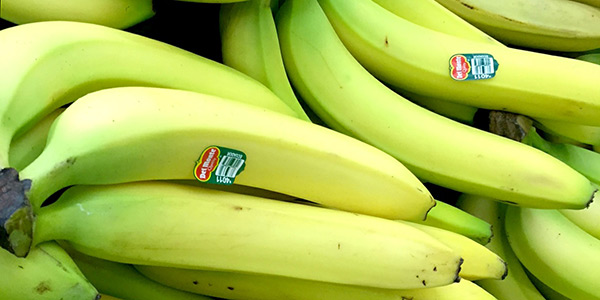History tells us that Mother Nature’s long game is tough to beat. And a well understood rule of survival is biodiversity and polycultures.
Commercial banana farmers are experiencing this firsthand. The Tropical Race Four (TR4) strain of Panama Disease is jumping from country-to-country, edging toward Latin America. This soil-borne fungus threatens the existence of the Cavendish banana, or 99 percent of the export market.
As widely reported in the news, Panama Disease has been wreaking havoc on commercial banana production for decades. It wiped out the popular Gros Michel banana in the mid 1900s. Following that disaster, researchers discovered that the Cavendish cultivar could grow in the same affected soils, so it was presumed to be immune—or at least resistant—to Panama Disease. But when the TR4 strain surfaced in the mid 1980s and wiped out Cavendish plantations in Taiwan, we learned different.
The real turning point in the banana story, however, didn’t happen with the emergence of TR4. It happened in the late 1920s as the popularity of the dessert banana exploded in countries like the United States. The burgeoning market and advancements in shipping and trade prompted plantation owners to shift from polyculture to monoculture. Intensive production began, paving the way for pathogens.
In the wake of the Gros Michel wipeout, producers essentially doubled down on monoculture. Believing the disaster was the result of the cultivar and not the production practice, they placed their bets on a single high-yield, Panama-Disease-resistant Cavendish plant.
Today, virtually every Cavendish planted is a genetically-identical clone of that one plant. The multi-billion dollar banana industry—and the livelihood of countless numbers of people—hinges on millions of hectares of monocultures with absolutely no genetic diversity. This sets the stage for pathogens like TR4 to permeate the soil. From there it spreads easily—every tire, boot, tool, etc. that hits the soil is contaminated. In an industry manned by migrant workers, containment becomes very problematic.
With so much energy being poured into finding soil treatments and engineering TR4 resistance into plants, you have to wonder if it’s time to begin the tough work of examining the bigger picture. As we approach 100 years of banana monoculture, it could be time for sustainable change.
In the long-run, nature always prevails. And if this can happen to the banana industry, what about the other monocultures (think corn, soy, wheat, etc.) that are so integral to our existing agricultural system?

